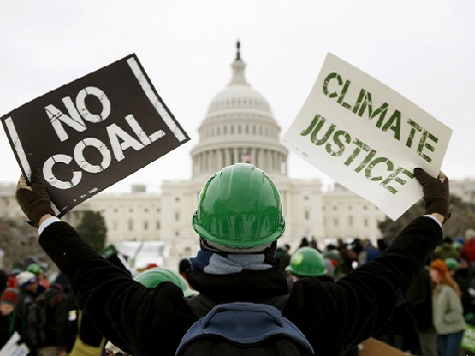
Washington, DC local residents and environmentalists gathered at a meeting room in a Methodist Church on Capitol Hill last Thursday to discuss their dissatisfaction with the Capitol Hill cogeneration plant.
The plant, which was completely coal fired for almost one hundred years, exclusively heats the capitol. However, since 2007, according to the Architect of the Capitol (AOC), the plant began to move from burning primarily coal to burning mostly natural gas–but not entirely. Coal is still burned at the plant, but the rate of its reduction is not fast enough for local environmentalists and lawmakers.
In March of 2009, anti-coal protesters blocked the gates of the nearly century old Capitol Power Plant for nearly four hours. No one was arrested. By May of that year, then Speaker Nancy Pelosi (D – CA) and Senate Majority Leader Harry Reid (D – NV) announced that the plant would switch over to natural gas as its sole energy source. The promise was made in large part as an effort from Democrats to limit carbon emissions in the nation’s capitol.
However, despite the Democratic leaders agreeing in 2009 that the AOC could still use coal in three particular circumstances, green advocates claim the the AOC is not doing enough to completely eradicate coal from the capitol plant.
In an e-mail statement to Breitbart News, the AOC wrote:
In 2009, the Architect of the Capitol worked with Leader Pelosi and Senator Reid to address the request that the Capitol Power Plant move away from using coal. With Congress’s support, the Architect of the Capitol has made significant investments and improvements at the Plant over the past several years. However, the Architect must maintain the capability to potentially use some coal to ensure that it can provide uninterrupted service to Congress, and outlined 3 instances when coal would need to be used:
- If there is an emergency and natural gas supplies are interrupted;
- Abnormally cold conditions place higher than normal demands on the Plant;
- Equipment outages or maintenance on the gas boilers require use of backup fuel.
The Leaders agreed to these terms, and since 2009, the Capitol Power Plant has worked within these terms, and has relied on natural gas as its primary fuel source. In addition, the AOC continues to provide information to the Leaders about annual fuel use at the Plant.
In Fiscal Year 2012, the Plant relied on natural gas for 92% of its energy needs. By comparison, in 2005, the Plant relied on natural gas 42% of the time.
The AOC has identified the construction of a cogeneration plant as the most environmentally and economically beneficial way to meet its goal to use natural gas 100% of the time, and Congress has been supportive of this project.
After more than 100 years in operation, significant investment is needed to replace aging infrastructure and to install new, energy-efficient equipment in the Plant, and implementing cogeneration will allow the Plant to discontinue the use of its 60-year-old, less energy efficient coal boilers.
Washington DC Councilman Tommy Wells sent a letter to Stephen Ours, Chief of the Permitting Branch of DC Air and Quality Division, to oppose “any permits that would allow the Capitol Power Plant to continue, and potentially expand pollution emissions.” Wells references the Pelosi and Reid push to rid the plant of coal four years ago saying, “In 2009, positive steps were taken to reduce coal use at the plant. However, it appears many of those advances were undermined and coal use is as prominent as ever.”
The DC Chapter’s Sierra Club stated late last week that “recently, the Defense Logistics Agency solicited bids for 20,000 tons of coal for delivery to the Plant in 2013. This comes to more than 220,000 pounds of coal burned per day during heating season.”
The Sierra Club and Washington DC Councilman Tommy Wells claim the emissions from the portion of the plant will cause “significant health hazards to children in the area,” Wells said in his opposition letter to Ours.
Advocates for coal energy disagree, saying that governmental entities like the Environmental Protection Agency (EPA) “exaggerate” coal energy’s “health risks,” and that the EPA “relies on dubious co-benefits to make the utility MACT rule look reasonable.” The MACT standard is, according to the EPA, “a level of control that was introduced by Title III of the 1990 Clean Air Act Amendments.”
In a letter, the AOC responded to complaints from environmentalists:
While the AOC has reduced coal use at the CPP over the past several years, it cannot cease using coal until the new cogeneration plant is constructed. As a result, the Defense Logistics Agency (DLA) secures a certain quantity of coal for the AOC should any of the three circumstances listed above occur.

COMMENTS
Please let us know if you're having issues with commenting.